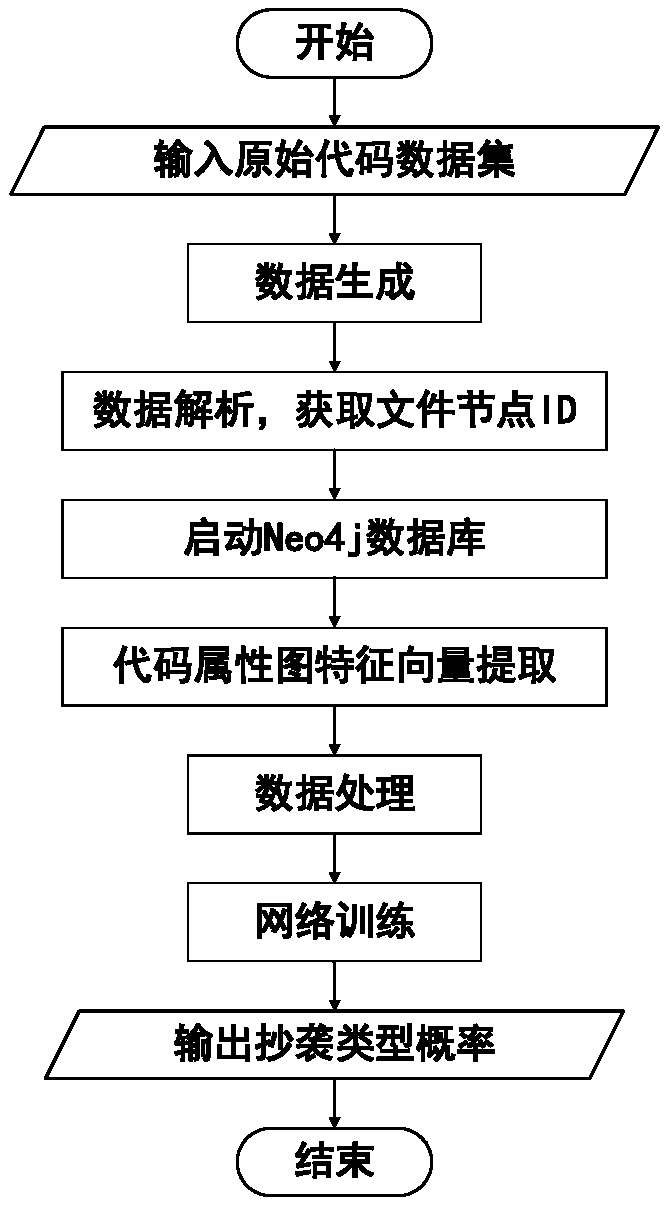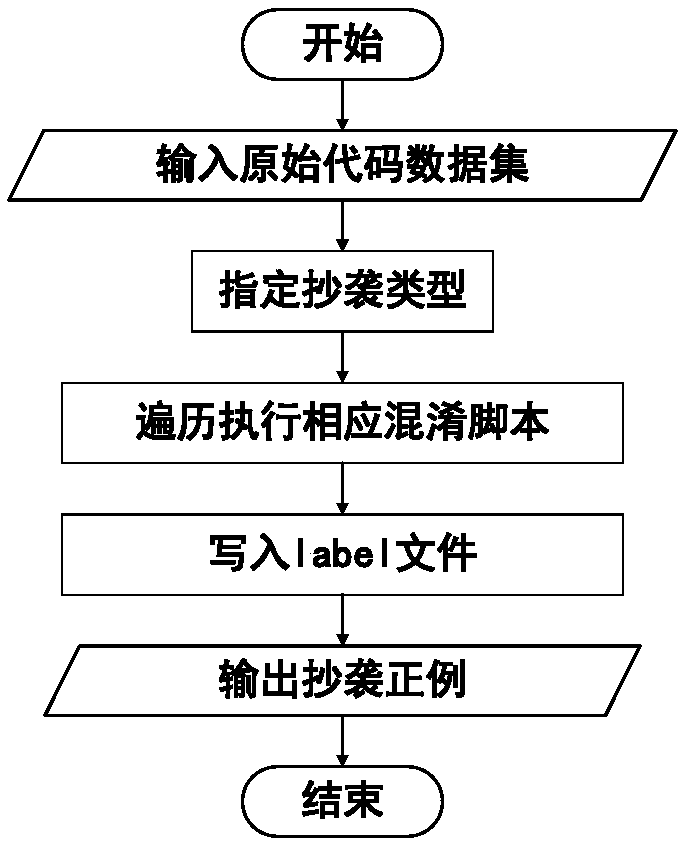Source code multi-tag graph neural network-based program code copying type detection method and system
A technology of neural network and program code, which is applied in the direction of biological neural network model, neural architecture, program/content distribution protection, etc. It can solve the problems of complex representation in the middle of the code, full of subjective colors, plagiarism of two codes, etc., and achieve high accuracy rate effect
- Summary
- Abstract
- Description
- Claims
- Application Information
AI Technical Summary
Problems solved by technology
Method used
Image
Examples
Embodiment 1
[0060] Such as figure 2 As shown, the program code plagiarism type detection method based on the source code multi-label graph neural network provided by the present invention includes the following steps:
[0061] S1. For a code text, use a custom code micro-obfuscation tool to generate a plagiarized version for it, and record the type of plagiarism at the same time;
[0062] S2. Extracting the feature vector of the code attribute graph from the code text and its plagiarized version;
[0063] S3. Integrate the code text and its plagiarized version of the code attribute map feature vector to provide a good input for the neural network, so that the integrated code text and its plagiarized version of the code attribute graph feature vector are positive examples;
[0064] S4. Using the methods of steps S2 to S3 to integrate and obtain the code text-code property map feature vector of the code text, making it a counterexample;
[0065] S5. Use the neural network to define a mul...
PUM
 Login to View More
Login to View More Abstract
Description
Claims
Application Information
 Login to View More
Login to View More - R&D
- Intellectual Property
- Life Sciences
- Materials
- Tech Scout
- Unparalleled Data Quality
- Higher Quality Content
- 60% Fewer Hallucinations
Browse by: Latest US Patents, China's latest patents, Technical Efficacy Thesaurus, Application Domain, Technology Topic, Popular Technical Reports.
© 2025 PatSnap. All rights reserved.Legal|Privacy policy|Modern Slavery Act Transparency Statement|Sitemap|About US| Contact US: help@patsnap.com



